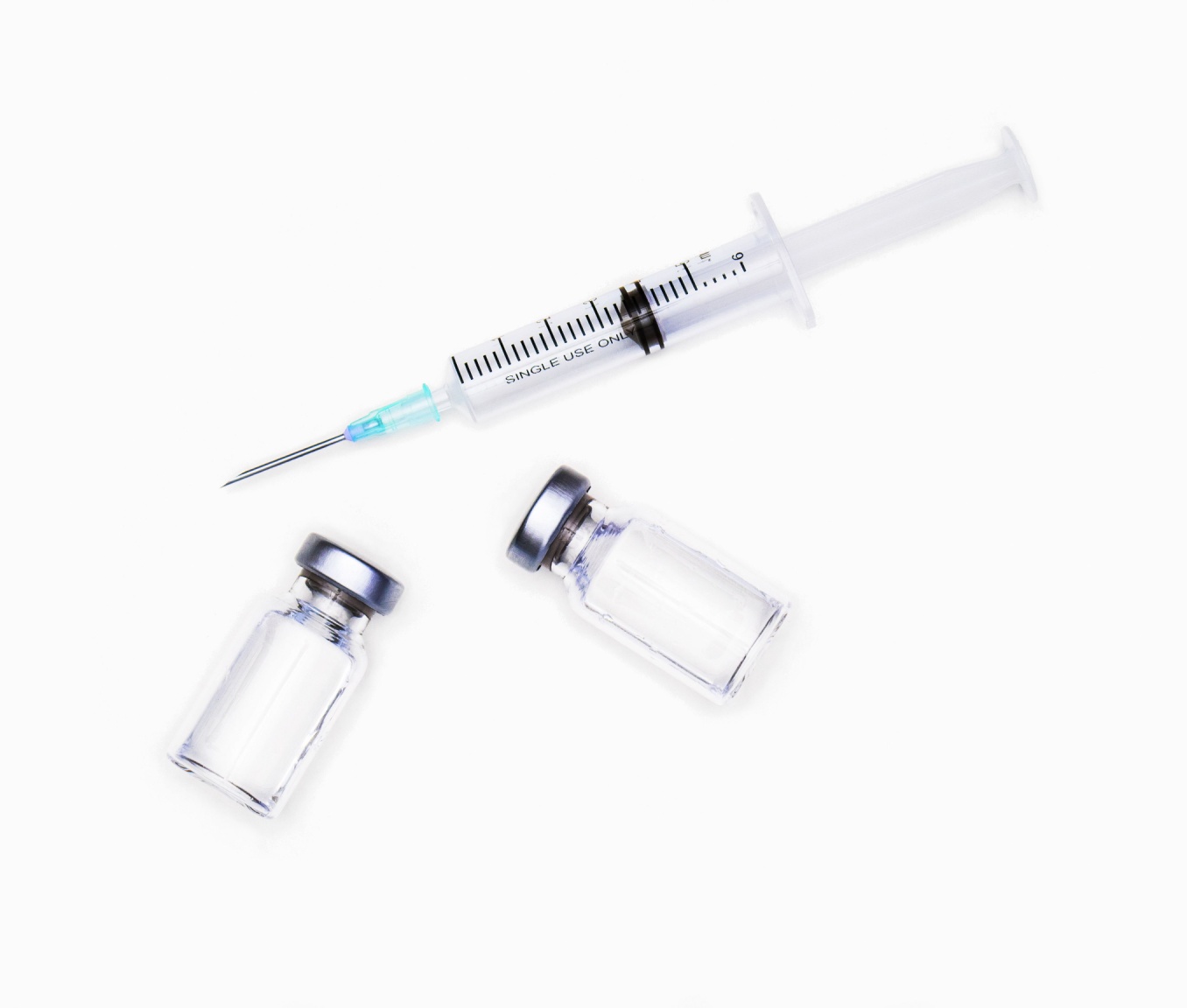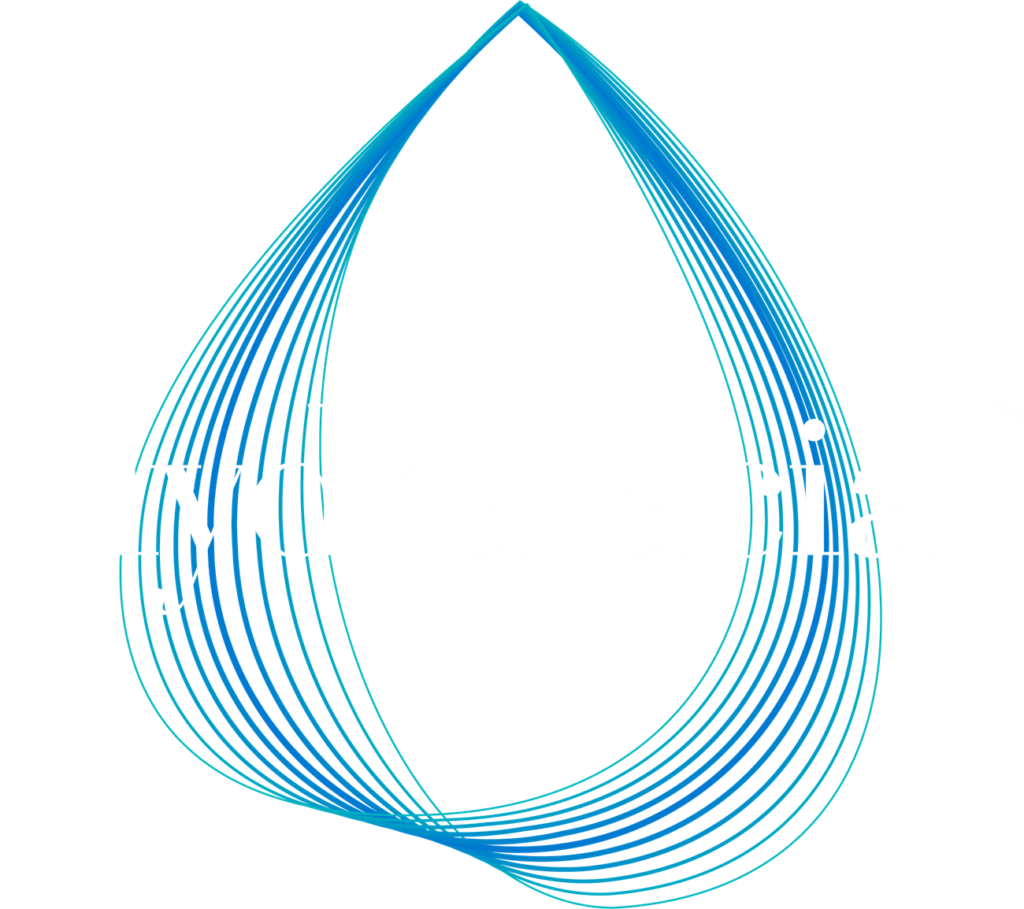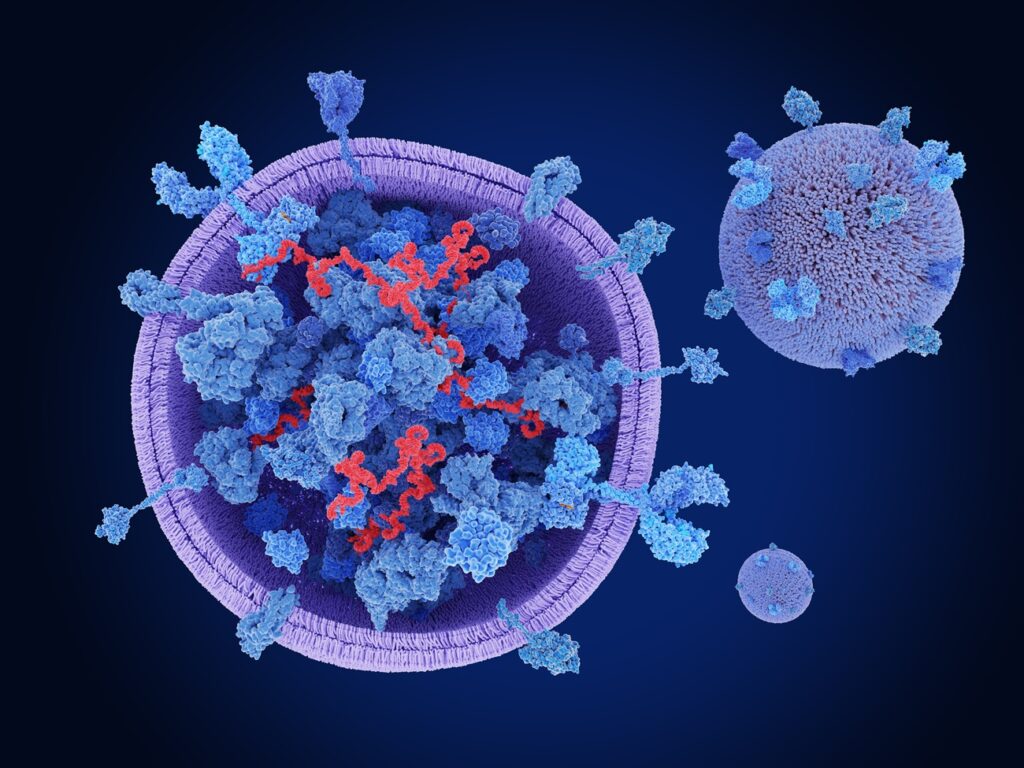Wellness and Anti-Aging Peptides: Everything You Need To Know
Peptides are everywhere right now. They’re being marketed as the next frontier in anti-aging, muscle building, fat loss, and even immune support. But for every promising breakthrough, there are also significant information gaps, overlooked safety protocols, and products capitalizing on momentum rather than evidence.
At Allure, our goal is to act as a filter, not a funnel. We stay deeply informed so we can help our clients make smart, confident decisions based on real evidence, not hype. That’s why we created this guide: to demystify the peptide landscape and share what the science (and the regulatory bodies) currently say. We’ll also share a list of sources at the end so you can read through the evidence yourself.
What Are Peptides?
Peptides are short chains of amino acids that signal specific actions in the body. Think of them as messengers: some stimulate collagen, others regulate appetite, and some support tissue repair. This makes them an exciting area of exploration for medicine, aesthetics, and longevity.
In aesthetics and wellness, peptides are used in several ways:
- Injectable: For fat loss, collagen stimulation, or hormone modulation
- Topical: As part of anti-aging skincare
- Oral: For wellness or weight loss
However, not all peptides are created or regulated equally.

Two Very Different Categories: Regulated vs. Experimental Peptides
FDA-Approved Peptides
These peptides have undergone large-scale clinical trials and are approved for specific medical uses. They are:
- Manufactured under strict quality controls
- Prescribed within established medical guidelines and widely included in clinical decision-making tools
- Backed by years of clinical data
Examples include:
- GLP-1 receptor agonists (semaglutide, tirzepatide): Approved for weight loss and diabetes under brand names like Zepbound, Ozempic, Mounjaro, and Wegovy. These agents have demonstrated significant efficacy in weight loss (15–20% of body weight in clinical trials) and metabolic improvement, with well-established safety profiles and dosing regimens.
- Recombinant human growth hormone (rhGH): Approved for specific growth deficiencies.
It’s important to clarify that while compounded GLP-1s are not FDA-approved in their compounded form, they are derived from active pharmaceutical ingredients that have been FDA-approved after rigorous clinical trials. This places them in a different category than experimental peptides, which often lack both regulatory review and substantial clinical data. That said, compounded medications still carry quality and consistency concerns, making proper sourcing and oversight essential.
Experimental Wellness Peptides
These include:
- BPC-157 (marketed for tissue repair)
- Thymosin alpha-1 (an immune modulator)
- Sermorelin (a growth hormone secretagogue)
- Ipamorelin (a growth hormone secretagogue)
- CJC1295 (a growth hormone releasing analog)
- GHK-Cu (a tripeptide-copper complex marketed for tissue repair and skin regeneration)
Most of these are not FDA-approved for any use in the U.S., though they may be compounded and offered by wellness clinics.
They are often marketed for:
- Anti-aging
- Fat loss
- Muscle growth
- Recovery
While there are anecdotal reports and some animal and small human studies suggesting benefits from these peptides, many claims are not backed by high-quality human studies confirming their safety or effectiveness. The level of evidence greatly depends on the specific peptide. Because these compounds are unregulated, there is often considerable variation in formulation, potency, and purity, making consistent outcomes difficult and safety uncertain.

What the Evidence Shows, And What It Doesn’t
- GLP-1 agonists (semaglutide, tirzepatide) are well-supported by research. In clinical trials, they’ve helped patients lose 15–20% of their body weight while controlling blood sugar and reducing the risk of major heart problems in people with diabetes. Leading medical associations like the American Diabetes Association and European Association for the Study of Diabetes recommend them for those with diabetes who have other heart risks. They are also FDA approved for weight management in people with obesity, even without diabetes. They are very, very effective in treating these conditions for most people. There are known side effects, which are mostly temporary, digestive issues, though some rare cases of gallbladder and pancreatic issues have been reported. They are not recommended for those with a family or personal history of medullary thyroid cancer or multiple endocrine neoplasia type 2, based on risk facts seen in animal studies (though these have not been seen in humans directly). Those with diabetic eye disease should carefully watch their blood sugar, as sudden drops can worsen this issue.
- BPC-157, while often praised online, has no large-scale human trials. Its effectiveness is largely based on animal models and patient/provider reports. Rodent studies have shown a decreased healing time in various tissues such as skin, muscle, tendons, ligaments, nerves, bones, and the gastrointestinal tract. These same animal studies show that it may influence blood vessel growth and NO pathways, which are important in repair and inflammation. There have been no reported toxic effects in animals. However, the data in humans is extremely limited.
- Thymosin alpha-1 is an immune modulator that has demonstrated efficacy and safety in the treatment of certain diseases such as viral infections, some types of cancer, and as an immune booster in people with weakened immune systems – especially the elderly or those undergoing chemotherapy or organ transplants. Large-scale studies involving over 11,000 patients have shown it to be generally safe in these contexts, but no well-designed trials have examined its effects or long-term safety in healthy individuals using it for general anti-aging, longevity, or overall wellness.
- Sermorelin has been shown to increase levels of growth hormone and IGF-I in older adults and some clinical studies have noted modest improvements in lean muscle mass, skin thickness, and certain aspects of cognition. Improvements in sleep, physical performance, and general well being have been minimal or inconsistent. Most research has been in small, short-term studies.
- Ipamorelin has demonstrated selective growth hormone release without affecting other hormones. In animal studies, it has been shown to promote bone growth and helped prevent muscle breakdown caused by steroids. In human studies, it causes a short, one-time spike in growth hormone levels, but there’s no evidence of this leading to lasting changes. No serious trials have been conducted to test its effects in muscle building, antiaging, or long term safety.
- CJC1295 has shown, through clinical research, the ability to significantly boost growth hormone and IGF-I levels in the blood for over a week, with some effects lasting longer with repeated use. Notably, it did not disrupt the natural rhythm of hormone release. Animal studies showed the ability to restore normal growth and body composition in mice lacking natural growth hormone signals. It appears to be well-tolerated in short term trials, and blood analysis demonstrate that the drug activated the growth hormone system, but it is unclear what those changes meant long-term in a clinical sense. However, there are no controlled studies for wellness use in healthy people and most evidence for this are anecdotal.
- GHK-Cu has shown the ability to promote collagen production, support blood vessel growth, regulation inflammation, and speed wound healing in laboratory and animal settings. It’s been associated with improvements to skin, in small, short-term studies. While it appears to be well tolerated, there are no randomized, controlled human studies to provide strong evidence for its effectiveness or safety for general use.
There are a multitude of other, less known peptides, and new peptides are hitting the market regularly.
So, do peptides work?
Some absolutely do. Some appear to. Others remain unproven or carry unknown risks.
Animal studies or use in narrow medical conditions don’t guarantee benefit or safety in healthy people. For instance, a drug that improves memory in Alzheimer’s patients won’t necessarily enhance cognition in a healthy adult.
Conversely, lack of evidence doesn’t mean a peptide can’t work, it may just mean the studies haven’t been done yet. Choosing to use such a treatment means accepting the risks, and the unknowns, that come with being among the first to find out.
Challenges with Topical and Oral Peptides
- Topical Peptides: Most topical peptide formulations, especially those offered by medical spas or in over-the-counter skincare, cannot penetrate the skin deeply enough to reach target layers like the dermis or neuromuscular junctions. The main barrier is the stratum corneum, which blocks large molecules like peptides. Without advanced delivery methods such as microneedles, encapsulation, or iontophoresis, most peptides stay near the surface and have limited clinical impact. Some may improve superficial hydration or texture, but expectations should be realistic as these are generally the same benefits as other skin care products. When deeper effects are claimed, ask what delivery technology is being used to support that claim.
- Oral Peptides: Absorption is also a major limitation for oral peptides. Most peptides break down in the stomach and intestines before they can be absorbed, resulting in very low systemic availability, typically less than 2%. Some advanced oral formulations (like oral semaglutide) exist, but these are rare exceptions and require extensive engineering and are still less effective than injectable forms for now. For the vast majority of peptides, injectable forms are the only clinically reliable route of administration.

Some Hidden Risks of Experimental Peptides
The allure of innovation sometimes outpaces regulation. Unfortunately, peptides offered by wellness clinics can vary depending on where they are sourced from.
Risks can include:
- Contaminants (heavy metals, bacteria)
- Inaccurate dosing
- Unlabeled ingredients
- Lack of long-term safety data
Some products marketed as “peptides” are technically legal to compound, but that doesn’t make them safe. In fact, several have been flagged by the FDA for misuse, misleading marketing, and adverse events. To further evade regulatory oversight, some products are labeled “for research use only” or “not for human use,” allowing manufacturers to bypass consumer safety regulations entirely, even when these products are being used in clinical or aesthetic settings.
Are Peptides Safe?
The level of safety depends on the individual drug, the knowledge and care of the provider, where the peptide was sourced from, and the individual patient. Everyone has different risk tolerance and it is up to the individual and their healthcare provider to make decisions that are right for them. But, those decisions should be made with as much information as possible. Before trying any peptide treatment, ask:
- Is it FDA-approved for this, or any, use?
- Is there strong enough data supporting its effectiveness and safety?
- Is the provider offering this licensed to prescribe medicine, and is the pharmacy regulated?
- Is the prescriber actively involved in your ongoing care, or just “selling” you a drug?
- Are you being given full safety disclosures?
- Does the product come with batch tracking and a certificate of analysis?
If any of those answers are unclear, pause and decide the risk level you are comfortable with. Medicine should be precise, not a guessing game.
Why Allure Doesn’t Offer Unapproved Peptides (Right Now)
We believe in emerging science. We stay closely tuned to what’s promising. But we don’t chase trends or offer treatments simply because others do.
Right now, the data isn’t strong enough, both in terms of effectiveness and safety, for us to feel confident offering the majority of these peptides. When that changes, you’ll hear it from us first. Until then, we’re here to help you understand what works, what’s safe, and what fits your goals. In them meantime, we do offer brand name, FDA-approved peptides like Zepbound due to its proven safety and efficacy profile.
Looking Ahead: The Future of Peptides
We’re optimistic. Peptides hold real promise, especially as delivery systems, synthesis methods, and clinical trials evolve. But science moves slowly, and that’s a good thing when your health and safety are involved.
We’ll continue to watch this space carefully, and when the safety and effectiveness of some of these newer peptides meet our standards, we’ll integrate the right options with the same rigor we bring to everything we do.
In Summary: Peptides Deserve Curiosity and Caution
If you’re curious about peptides, that’s a sign of empowerment. You’re paying attention to your health, your aging process, and your options.
At Allure, we’re here to support that mindset. Our promise is not to chase hype, but to guide you through it. When the science is strong, so is our support. Until then, we stay focused on filtering what is proven.
If you have any questions, feel free to email us at info@allureaestheticsllc.com or call or text us at 610 393-1253. If you’d like to schedule an appointment to discuss all your goals and options, please visit our booking page.
Evidence Matters.
At Allure, we believe you deserve clear, trustworthy information before making decisions about your health. The following references were used to guide and support the information shared above. Feel free to read through them for more detailed information.
- 8. Obesity and Weight Management for the Prevention and Treatment of Type 2 Diabetes: Standards of Care in Diabetes-2025. Diabetes Care. 2025;48(Supplement_1):S167-S180. doi:10.2337/dc25-S008.
- 12. Retinopathy, Neuropathy, and Foot Care: Standards of Care in Diabetes-2025. Diabetes Care. 2025;48(Supplement_1):S252-S265. doi:10.2337/dc25-S012.
- Activation of the GH/IGF-1 Axis by CJC-1295, a Long-Acting GHRH Analog, Results in Serum Protein Profile Changes in Normal Adult Subjects. Sackmann-Sala L, Ding J, Frohman LA, Kopchick JJ. Growth Hormone & IGF Research : Official Journal of the Growth Hormone Research Society and the International IGF Research Society. 2009;19(6):471-7. doi:10.1016/j.ghir.2009.03.001.
- BPC 157 and Standard Angiogenic Growth Factors. Gastrointestinal Tract Healing, Lessons From Tendon, Ligament, Muscle and Bone Healing. Seiwerth S, Rucman R, Turkovic B, et al. Current Pharmaceutical Design. 2018;24(18):1972-1989. doi:10.2174/1381612824666180712110447.
- Cardiovascular Effects of Incretins: Focus on Glucagon-Like Peptide-1 Receptor Agonists. Madsbad S, Holst JJ. Cardiovascular Research. 2023;119(4):886-904. doi:10.1093/cvr/cvac112.
- The Clinical Impact of GLP-1 Receptor Agonists in Type 2 Diabetes: Focus on the Long-Acting Analogs. Rodbard HW. Diabetes Technology & Therapeutics. 2018;20(S2):S233-S241. doi:10.1089/dia.2018.0103.
- Comprehensive Review of the Safety and Efficacy of Thymosin Alpha 1 in Human Clinical Trials. Dinetz E, Lee E. Alternative Therapies in Health and Medicine. 2024;30(1):6-12.
- Deciphering Cellular Biological Processes to Clinical Application: A New Perspective for Tα1 Treatment Targeting Multiple Diseases. Matteucci C, Argaw-Denboba A, Balestrieri E, et al. Expert Opinion on Biological Therapy. 2018;18(sup1):23-31. doi:10.1080/14712598.2018.1474198.
- Endocrine and Metabolic Effects of Long-Term Administration of [Nle27]growth Hormone-Releasing Hormone-(1-29)-Nh2 in Age-Advanced Men and Women. Khorram O, Laughlin GA, Yen SS. The Journal of Clinical Endocrinology and Metabolism. 1997;82(5):1472-9. doi:10.1210/jcem.82.5.3943.
- Exogenous Bioactive Peptides Have a Potential Therapeutic Role in Delaying Aging in Rodent Models. Wang J, Wu Y, Chen Z, et al. International Journal of Molecular Sciences. 2022;23(3):1421. doi:10.3390/ijms23031421.
- Exploring FDA-Approved Frontiers: Insights Into Natural and Engineered Peptide Analogues in the GLP-1, GIP, GHRH, CCK, ACTH, and Α-MSH Realms. Al Musaimi O. Biomolecules. 2024;14(3):264. doi:10.3390/biom14030264.
- Focus on Ulcerative Colitis: Stable Gastric Pentadecapeptide BPC 157. Sikiric P, Seiwerth S, Rucman R, et al. Current Medicinal Chemistry. 2012;19(1):126-32. doi:10.2174/092986712803414015.
- From Lab to Bedside: Emerging Clinical Applications of Thymosin Alpha 1. Goldstein AL, Goldstein AL. Expert Opinion on Biological Therapy. 2009;9(5):593-608. doi:10.1517/14712590902911412.
- Gastric Pentadecapeptide Body Protection Compound BPC 157 and Its Role in Accelerating Musculoskeletal Soft Tissue Healing. Gwyer D, Wragg NM, Wilson SL. Cell and Tissue Research. 2019;377(2):153-159. doi:10.1007/s00441-019-03016-8.
- GHK and DNA: ResettingS the Human Genome to Health. Pickart L, Vasquez-Soltero JM, Margolina A.BioMed Research International. 2014;2014:151479. doi:10.1155/2014/151479.
- GHK Peptide as a Natural Modulator of Multiple Cellular Pathways in Skin Regeneration. Pickart L, Vasquez-Soltero JM, Margolina A. BioMed Research International. 2015;2015:648108. doi:10.1155/2015/648108.
- Glucagon-Like Peptide-1 Receptor Agonists in the Management of Type 2 Diabetes Mellitus and Obesity: The Impact of Pharmacological Properties and Genetic Factors. Klen J, Dolžan V. International Journal of Molecular Sciences. 2022;23(7):3451. doi:10.3390/ijms23073451.
- Glucagon-Like Peptide-1 Receptor Agonists to Expand the Healthy Lifespan: Current and Future Potentials. Kreiner FF, von Scholten BJ, Kurtzhals P, Gough SCL. Aging Cell. 2023;22(5):e13818. doi:10.1111/acel.13818.
- Glucagon-Like Peptide-1 Receptor Agonists-Use in Clinical Practice. Tricò D, Solini A. Advances in Chronic Kidney Disease. 2021;28(4):328-336. doi:10.1053/j.ackd.2021.04.002.
- Growth Hormone and Growth Hormone Secretagogue Effects on Nitrogen Balance and Urea Synthesis in Steroid Treated Rats. Aagaard NK, Grøfte T, Greisen J, et al. Growth Hormone & IGF Research : Official Journal of the Growth Hormone Research Society and the International IGF Research Society. 2009;19(5):426-31. doi:10.1016/j.ghir.2009.01.001.
- Growth Hormone in the Aging Male. Sattler FR. Best Practice & Research. Clinical Endocrinology & Metabolism. 2013;27(4):541-55. doi:10.1016/j.beem.2013.05.003.
- Growth Hormone-Releasing Hormone and Growth Hormone Secretagogues in Normal Aging. Merriam GR, Schwartz RS, Vitiello MV. Endocrine. 2003;22(1):41-8. doi:10.1385/ENDO:22:1:41.
- The Human Tri-Peptide GHK and Tissue Remodeling. Pickart L. Journal of Biomaterials Science. Polymer Edition. 2008;19(8):969-88. doi:10.1163/156856208784909435.
- The Human Tripeptide GHK-Cu in Prevention of Oxidative Stress and Degenerative Conditions of Aging: Implications for Cognitive Health. Pickart L, Vasquez-Soltero JM, Margolina A. Oxidative Medicine and Cellular Longevity. 2012;2012:324832. doi:10.1155/2012/324832.
- Immune Modulation With Thymosin Alpha 1 Treatment. King R, Tuthill C. Vitamins and Hormones. 2016;102:151-78. doi:10.1016/bs.vh.2016.04.003.
- Ipamorelin, a New Growth-Hormone-Releasing Peptide, Induces Longitudinal Bone Growth in Rats. Johansen PB, Nowak J, Skjaerbaek C, et al. Growth Hormone & IGF Research : Official Journal of the Growth Hormone Research Society and the International IGF Research Society. 1999;9(2):106-13. doi:10.1054/ghir.1999.9998.
- Ipamorelin, the First Selective Growth Hormone Secretagogue. Raun K, Hansen BS, Johansen NL, et al. European Journal of Endocrinology. 1998;139(5):552-61. doi:10.1530/eje.0.1390552.
- Jack of All Trades: Thymosin Α1 and Its Pleiotropy. Romani L, Moretti S, Fallarino F, et al. Annals of the New York Academy of Sciences. 2012;1269:1-6. doi:10.1111/j.1749-6632.2012.06716.x.
- Management of Hyperglycemia in Type 2 Diabetes, 2018. A Consensus Report by the American Diabetes Association (ADA) and the European Association for the Study of Diabetes (EASD). Davies MJ, D’Alessio DA, Fradkin J, et al. Diabetes Care. 2018;41(12):2669-2701. doi:10.2337/dci18-0033.
- Multifunctionality and Possible Medical Application of the BPC 157 Peptide-Literature and Patent Review. Józwiak M, Bauer M, Kamysz W, Kleczkowska P. Pharmaceuticals (Basel, Switzerland). 2025;18(2):185. doi:10.3390/ph18020185.
- Netnography of Female Use of the Synthetic Growth Hormone CJC-1295: Pulses and Potions. Van Hout MC, Hearne E. Substance Use & Misuse. 2016;51(1):73-84. doi:10.3109/10826084.2015.1082595.
- Neuroendocrine Aging in Men. Andropause and Somatopause. Anawalt BD, Merriam GR. Endocrinology and Metabolism Clinics of North America. 2001;30(3):647-69. doi:10.1016/s0889-8529(05)70206-1.
- Off-Label Use of Hormones as an Antiaging Strategy: A Review. Samaras N, Papadopoulou MA, Samaras D, Ongaro F. Clinical Interventions in Aging. 2014;9:1175-86. doi:10.2147/CIA.S48918.
- Once-Daily Administration of CJC-1295, a Long-Acting Growth Hormone-Releasing Hormone (GHRH) Analog, Normalizes Growth in the GHRH Knockout Mouse. Alba M, Fintini D, Sagazio A, et al. American Journal of Physiology. Endocrinology and Metabolism. 2006;291(6):E1290-4. doi:10.1152/ajpendo.00201.2006.
- PASylated Thymosin Α1: A Long-Acting Immunostimulatory Peptide for Applications in Oncology and Virology. Binder U, Skerra A. International Journal of Molecular Sciences. 2020;22(1):E124. doi:10.3390/ijms22010124.
- Pharmacokinetic-Pharmacodynamic Modeling of Ipamorelin, a Growth Hormone Releasing Peptide, in Human Volunteers. Gobburu JV, Agersø H, Jusko WJ, Ynddal L. Pharmaceutical Research. 1999;16(9):1412-6. doi:10.1023/a:1018955126402.
- Potential Applications of GH Secretagogs in the Evaluation and Treatment of the Age-Related Decline in Growth Hormone Secretion. Merriam GR, Buchner DM, Prinz PN, Schwartz RS, Vitiello MV. Endocrine. 1997;7(1):49-52. doi:10.1007/BF02778062.
- Preclinical Safety Evaluation of Body Protective Compound-157, a Potential Drug for Treating Various Wounds. Xu C, Sun L, Ren F, et al. Regulatory Toxicology and Pharmacology : RTP. 2020;114:104665. doi:10.1016/j.yrtph.2020.104665.
- Prolonged Stimulation of Growth Hormone (GH) and Insulin-Like Growth Factor I Secretion by CJC-1295, a Long-Acting Analog of GH-releasing Hormone, in Healthy Adults. Teichman SL, Neale A, Lawrence B, et al. The Journal of Clinical Endocrinology and Metabolism. 2006;91(3):799-805. doi:10.1210/jc.2005-1536.
- Prospective, Randomized, Controlled, Proof-of-Concept Study of the Ghrelin Mimetic Ipamorelin for the Management of Postoperative Ileus in Bowel Resection Patients. Beck DE, Sweeney WB, McCarter MD. International Journal of Colorectal Disease. 2014;29(12):1527-34. doi:10.1007/s00384-014-2030-8.
- Pulsatile Secretion of Growth Hormone (GH) Persists During Continuous Stimulation by CJC-1295, a Long-Acting GH-releasing Hormone Analog. Ionescu M, Frohman LA. The Journal of Clinical Endocrinology and Metabolism. 2006;91(12):4792-7. doi:10.1210/jc.2006-1702.
- Regenerative and Protective Actions of the GHK-Cu Peptide in the Light of the New Gene Data. Pickart L, Margolina A. International Journal of Molecular Sciences. 2018;19(7):E1987. doi:10.3390/ijms19071987.
- Revised Robert’s Cytoprotection and Adaptive Cytoprotection and Stable Gastric Pentadecapeptide BPC 157. Possible Significance and Implications for Novel Mediator. Sikiric P, Seiwerth S, Brcic L, et al. Current Pharmaceutical Design. 2010;16(10):1224-34. doi:10.2174/138161210790945977.
- The Role of Growth Hormone-Releasing Hormone and the Hypothalamic-Pituitary-Somatotropic Axis in Aging: Potential Therapeutic Applications and Risks. Oikonomakos I, Siow R, Bornstein SR, Steenblock C. Hormone and Metabolic Research = Hormon- Und Stoffwechselforschung = Hormones Et Metabolisme. 2025;. doi:10.1055/a-2
- Sermorelin: A Review of Its Use in the Diagnosis and Treatment of Children With Idiopathic Growth Hormone Deficiency. Prakash A, Goa KL. BioDrugs : Clinical Immunotherapeutics, Biopharmaceuticals and Gene Therapy. 1999;12(2):139-57. doi:10.2165/00063030-199912020-00007
- Skin Permeability, a Dismissed Necessity for Anti-Wrinkle Peptide Performance. Mortazavi SM, Moghimi HR. International Journal of Cosmetic Science. 2022;44(2):232-248. doi:10.1111/ics.12770.
- Stable Gastric Pentadecapeptide BPC 157 and Wound Healing. Seiwerth S, Milavic M, Vukojevic J, et al. Frontiers in Pharmacology. 2021;12:627533. doi:10.3389/fphar.2021.627533.
- Stable Gastric Pentadecapeptide BPC 157 as a Therapy and Safety Key: A Special Beneficial Pleiotropic Effect Controlling and Modulating Angiogenesis and the NO-System. Sikiric P, Seiwerth S, Skrtic A, et al. Pharmaceuticals (Basel, Switzerland). 2025;18(6):928. doi:10.3390/ph18060928.
- The Stable Gastric Pentadecapeptide BPC 157 Pleiotropic Beneficial Activity and Its Possible Relations With Neurotransmitter Activity. Sikiric P, Boban Blagaic A, Strbe S, et al. Pharmaceuticals (Basel, Switzerland). 2024;17(4):461. doi:10.3390/ph17040461.
- Stress in Gastrointestinal Tract and Stable Gastric Pentadecapeptide BPC 157. Finally, Do We Have a Solution?. Sikiric P, Seiwerth S, Rucman R, et al. Current Pharmaceutical Design. 2017;23(27):4012-4028. doi:10.2174/1381612823666170220163219.
- Sustained Growth Hormone (GH) and Insulin-Like Growth Factor I Responses to Prolonged High-Dose Twice-Daily GH-releasing Hormone Stimulation in Middle-Aged and Older Men. Veldhuis JD, Patrie JT, Frick K, Weltman JY, Weltman A. The Journal of Clinical Endocrinology and Metabolism. 2004;89(12):6325-30. doi:10.1210/jc.2004-0430.
- Thymosin Α1 and Its Role in Viral Infectious Diseases: The Mechanism and Clinical Application. Tao N, Xu X, Ying Y, et al. Molecules (Basel, Switzerland). 2023;28(8):3539. doi:10.3390/molecules28083539.
- Thymosin Α1 Interacts With Galectin-1 Modulating the Β-Galactosides Affinity and Inducing Alteration in the Biological Activity. Matteucci C, Nepravishta R, Argaw-Denboba A, et al. International Immunopharmacology. 2023;118:110113. doi:10.1016/j.intimp.2023.110113.
- Thymosin Alpha1: An Endogenous Regulator of Inflammation, Immunity, and Tolerance. Romani L, Bistoni F, Montagnoli C, et al. Annals of the New York Academy of Sciences. 2007;1112:326-38. doi:10.1196/annals.1415.002.
- Thymosin Alpha 1 as an Adjunct to Influenza Vaccination in the Elderly: Rationale and Trial Summaries. Ershler WB, Gravenstein S, Geloo ZS. Annals of the New York Academy of Sciences. 2007;1112:375-84. doi:10.1196/annals.1415.050.
- Thymosin Alpha 1 – Reimagine Its Broader Applications in the Immuno-Oncology Era. Mao L. International Immunopharmacology. 2023;117:109952. doi:10.1016/j.intimp.2023.109952.
- Treatment of Diabetes in Older Adults: An Endocrine Society* Clinical Practice Guideline. LeRoith D, Biessels GJ, Braithwaite SS, et al. The Journal of Clinical Endocrinology and Metabolism. 2019;104(5):1520-1574. doi:10.1210/jc.2019-00198.








